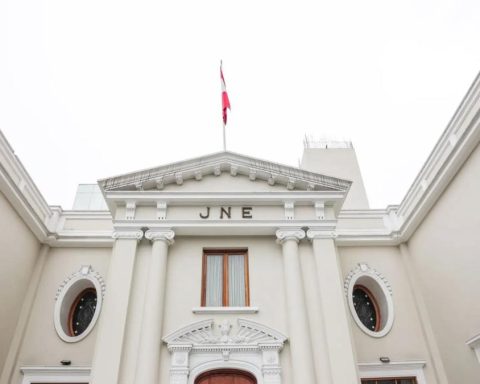Without a doubt, this 2022, which has finally ended, will be remembered for many things and one of them will be “the year of central banks”. This has to do with the fact that the monetary authorities, who had been supporting the economy for a long time, and in particular the global financial markets, changed course and let go of their hand. The reason, obviously, was the need to raise interest rates to combat the inflation unleashed in much of the world.
The tightening as it is known, implies that the central banks carry out a contractive monetary policy, which raises interest rates, allows them to buy bonds (reverses the quantitative easing) and goes on to sell them and thus dismantles its balance sheet. The consequences of this change in position are colossal for the global economy. Consider, for example, that the interest rate paid by US treasury bondsrepresents for the rest of the world, the risk free interest ratesince the probability of default of a bond issued by the United States is very close to zero, and therefore, constitutes the floor to which the countries of the rest of the world borrow (excluding Europe and Japan), among them Uruguay. Not to mention corporations and families. Making the cost of money more expensive (raising rates) has a contractive effect on the level of economic activity, even more important, if all the central banks of the world do the same, imagine the reader how the work ends.
However, this great work, which we could classify as a tragedy, lacked a leading actor who did not want (and does not want) to assume his role, perhaps stage fright?, but who finally entered the scene: the Central Bank of Japan.
What did the BoJ do? During December 19 and 20, the Central Bank of Japan held its Monetary Policy Meeting, where it decided to maintain control of the yield curve (yield curve control) with a short-term rate target of -0.1% and a long-term rate target of 0%. A small digression, yield curve control implies that the central bank targets a longer-term interest rate and buys or sells as many bonds as necessary to reach that rate.
Just as he kept control of the curve, he did the same with the asset purchase programs, and he also kept the guidance (forward orientation of monetary policy), which is highly influenced by what happens at the level of COVID-19. Nothing new under the sun. However, the surprise at the market level came when the central bank announced that it had decided to widen the “intervention band” for the 10-year bond yield from ±0.25% to ±0.50%. Governor Kuroda had previously denied the idea of widening the band, and the BoJ had also published its own analysis showing that the band should be kept at ±0.25%. Furthermore, it was announced that the BoJ will carry out fixed rate operations at 0.50% every business daywhen before it was carried out at 0.25%, among other measures.
The BoJ justified the change by noting that the functioning of the bond market has deteriorated considerably in recent times and since the yield of the JGB (Japanese Government Bond) serves as the basis for interest rates on corporate bonds, loans and similar instruments, the central bank is concerned that corporate bond issuance could be negatively affected if this situation persists. Therefore, the bank believes that enhancing the positive effects of band widening will contribute to the sustainability of monetary policy.
During the press conference, Kuroda stressed that the decision cannot be classified as tightening, but rather aims to improve the functionality of the market. Furthermore, he added that the BoJ believes that it will still take time to reach the 2% inflation target on a stable basis, and stressed his intention to continue monetary easing. Still, regardless of concerns about the proper functioning of the bond market and so on, the BoJ’s emphasis on its ultra-loose monetary policy was seriously hurting the market. and in (one of the most depreciated currencies in 2022 globally, -13% vs. the dollar).
In turn, there is the fact that Kuroda’s term as head of the BoJ ends in a few months, at the beginning of April 2023 to be precise, so, in view of increased speculative activity around Japanese bonds, it seems It is logical that the bank wants to better prepare the ground for somewhat more turbulent times.
The market reaction was immediate. the yields (yields) of the bonds rose approaching 0.50% (highest level since 2015), the yen soared close to 4%, posting (briefly) its biggest gain since 2009 while Japanese stocks initially fell -2.50% approx, except for banks which posted strong gains. But even more important, were the consequences for the rest of the world, with a rotation at the level of investors who began to buy Japanese sovereign bonds, for which they got rid of bonds in dollars and euros (mainly North American and German sovereign debt).
As a consequence, the long end of the US sovereign curve jumped 30 basis, with the US 30 year bond yield jumping from around 3.60% to 3.90% (today it operates at 3.78%). This is not only important for bonds or fixed income, since to value stocks or the equity, long-term rates are key, since if it rises, generally all other assets fall. So dear reader, no matter how distant Japan and its monetary policy may seem to you, it is impossible not to be affected.
It must also be taken into account that the Japanese are the largest holders of American treasury bonds after the Federal Reserve, with 11% of the total… if the yield returns to Japan, let us also add the increase in the cost of USD hedges that makes American bonds even less attractive for the Japanese, generating more selling pressure on the former.
In any case, with inflation at 3.7% year-on-year, marking 40-year highs, moves towards further monetary tightening seem inevitable. But the truth is that the BoJ is in love with yield curve control, which is a problem because if investors do not believe that the yield is high enough, the only way to maintain control is for the central bank to keep buying bonds. And the BoJ looks set to continue to do so, as it increased monthly Japanese government bond (JGB) purchases to 9 trillion yen ($67.5 billion) per month from 7.3 trillion yen previously, but from a new limit which is 0.50%, since (and Kuroda acknowledged this), the previous limit of 0.25% had created too much selling pressure on 10-year bonds. The obvious question is, if the market twisted the BoJ’s arm by forcing it to raise the band limit to 0.50%, why not try again? In conclusion, at the moment it is not tightening in the strict sense of the term, but it is getting closer and closer to that, which, when it comes to Japan, means a lot. To be continue…















